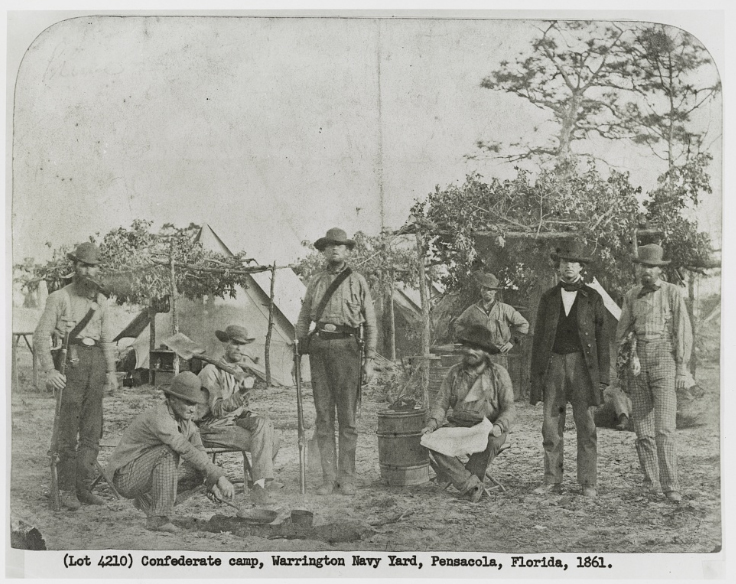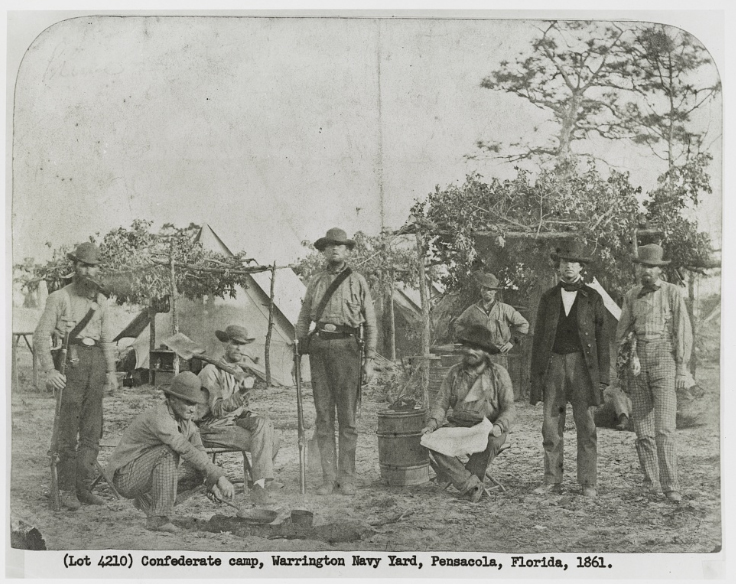Civil War Rations

 Food often became a scarce commodity during wartime, especially to soldiers fighting on the front lines. Soldiers were issued food rations, and similarities can be seen between Union and Confederate rations. At the start of the war, both followed the same ration guide that existed before secession. These rations allotted just over a pound of meat, likely beef or pork, just under a pound of "hard bread," and a small collection of dried vegetables. The most common form of hard bread, was called hard tack, a basic wheat biscuit that did not easily decay and could survive a rough march. It was extremely hard, and was often soaked in water, coffee, or in meat fat to soften it enough to eat. Other items, such as beans, peas, rice, coffee, sugar, or salt, were also issued, but not on a daily basis. Initially, soldiers were required to cook their own meals, with many grouping together to cook and share, but in time cooks were assigned the role. Some wealthy Confederate soldiers brought enslaved people with them, and they would serve as the cooks for the soldiers.
Food often became a scarce commodity during wartime, especially to soldiers fighting on the front lines. Soldiers were issued food rations, and similarities can be seen between Union and Confederate rations. At the start of the war, both followed the same ration guide that existed before secession. These rations allotted just over a pound of meat, likely beef or pork, just under a pound of "hard bread," and a small collection of dried vegetables. The most common form of hard bread, was called hard tack, a basic wheat biscuit that did not easily decay and could survive a rough march. It was extremely hard, and was often soaked in water, coffee, or in meat fat to soften it enough to eat. Other items, such as beans, peas, rice, coffee, sugar, or salt, were also issued, but not on a daily basis. Initially, soldiers were required to cook their own meals, with many grouping together to cook and share, but in time cooks were assigned the role. Some wealthy Confederate soldiers brought enslaved people with them, and they would serve as the cooks for the soldiers.
The distribution of rations was greatly affected by what was available. As the war continued, the differences in Union and Confederate rations grew because of resource scarcities and supply chain issues. The Union was able to provide flour and fresh meat routinely, but the Confederacy’s access to wheat and livestock dropped off leading to reduced rations. Corn was an alternative as a readily accessible and local crop, and cornbread replaced fresh or hard bread for the soldiers. Other rations, such as coffee, were affected by the Union blockade, and chicory roots were used instead. The Confederacy did have some supplies in abundance, such as peanuts and tobacco. The tobacco proved quite valuable, and it was often traded for real coffee or other supplies between Confederate and Union camps.
For more information on food issues faced by the Confederacy during the Civil War, visit Florida Memory for these articles: Corn, not Cotton or What Did Civil War Soldiers Eat?
(Image: Confederate Camp, Warrington Navy Yard, Pensacola, FL, 1861, Library of Congress)
